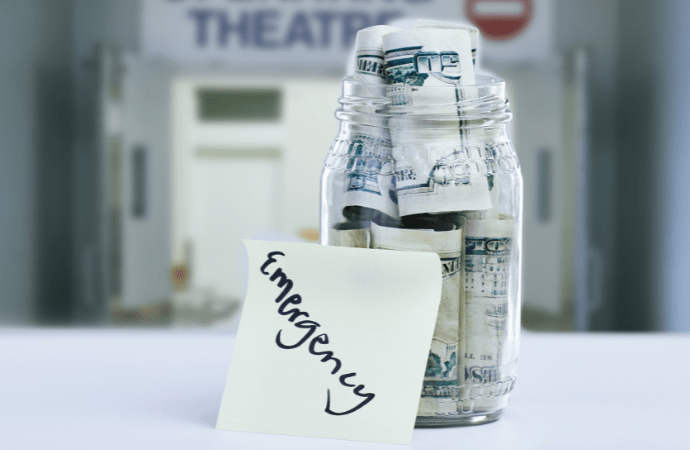Emergency Fund 101: Protecting Yourself from Financial Surprises

In the unpredictable journey of life, financial surprises—ranging from a sudden job loss to a major home repair—are inevitable. These unexpected events can derail meticulously crafted budgets, force you into high-interest debt, and create long-term financial stress. The single most effective defense against these shocks is a well-established Emergency Fund.
This guide serves as your comprehensive Emergency Fund 101, outlining what it is, why you need it, how much to save, and the best places to keep your crucial safety net.
What Exactly Is an Emergency Fund?
An emergency fund is simply a pool of readily accessible cash set aside specifically for unexpected, non-discretionary expenses. It is not an investment account, nor is it a savings account for planned future purchases like a vacation or a new car.
Think of it as your personal financial insurance policy. While insurance protects against catastrophic loss (like a house fire), the emergency fund protects against the smaller, yet still devastating, daily financial emergencies that happen to everyone.
Two Types of Financial Shocks
Financial emergencies generally fall into two categories:
- Spending Shocks: These are unplanned, sudden expenses that require immediate payment.
- Examples: Unexpected medical bills, urgent car repairs (like a blown transmission), replacing a broken water heater, or covering unexpected travel costs for a family emergency.
- Income Shocks: These are events that stop or significantly reduce your regular income.
- Examples: Job loss, being forced to take unpaid leave, or a significant reduction in freelance work/business revenue.
Why Your Emergency Fund is Non-Negotiable
Many Americans feel uncomfortable with their level of savings; recent surveys show that a significant portion would struggle to cover a $1,000 emergency from savings alone. Lacking this fund forces undesirable compromises:
- Avoid Debt Traps: Without savings, an unexpected bill often leads straight to a credit card or a personal loan. High-interest debt can take years to pay off, costing you thousands in interest and stifling future wealth-building efforts.
- Protect Your Investments: When an emergency strikes, people without a fund might be forced to sell investments (like stocks or retirement funds) at a loss or incur penalties for early withdrawal.
- Reduce Stress: Financial security is closely tied to mental health. Knowing you have a buffer allows you to tackle problems calmly, rather than panicking about where the money will come from.
- Maintain Financial Momentum: It allows you to keep paying your regular bills, mortgages, and debts on time, preserving your good credit score.
How Much to Save: Setting Your Target Goal
The standard rule of thumb for an emergency fund size is based on covering your essential monthly expenses, not your total income.
1. Calculate Your Essential Monthly Expenses
First, determine what you absolutely need to survive each month. This includes:
- Housing (rent/mortgage)
- Utilities (electricity, water, gas)
- Groceries (not dining out)
- Minimum debt payments (student loans, car payments)
- Insurance premiums (health, auto, renters/home)
Exclude non-essential spending like entertainment, subscriptions, travel, and dining out when calculating this baseline.
2. Determine Your Time Horizon
Once you have your essential monthly cost, multiply it by the number of months you want to cover.
| Scenario | Recommended Coverage | Calculation Example (If Essential Expenses are $3,000/month) |
| Starting Out / Single Income, Stable Job | 3 Months | $3,000 \times 3 = \mathbf{\$9,000}$ |
| Standard Target / Dual Income, Mortgage | 3 to 6 Months | $3,000 \times 6 = \mathbf{\$18,000}$ |
| High-Risk / Self-Employed, Single Income, Job Uncertainty | 6 to 12+ Months | $3,000 \times 9 = \mathbf{\$27,000}$ |
Pro-Tip for Beginners: If 3-6 months seems overwhelming, set a "Starter Goal" of $1,000 or one month's expenses. Achieving this first milestone builds crucial momentum and confidence.
Where to Keep Your Emergency Fund: Safety and Liquidity are Key
The location of your emergency fund is as important as the amount. It must be safe (not subject to market risk) and liquid (easily accessible, ideally within one business day).
The Best Places:
- High-Yield Savings Accounts (HYSA): These are currently considered the gold standard. They are FDIC-insured (up to the legal limit), offer significantly better interest rates than traditional savings accounts, and provide immediate access to funds.
- Money Market Accounts (MMA): Similar to HYSAs, MMAs offer competitive interest rates and good liquidity, though they may have slight limitations on monthly transactions. They are also typically FDIC-insured.
Places to Generally AVOID:
- Checking Accounts: Funds can get mixed with daily spending, leading to accidental use or overdrafts.
- Stocks, Bonds, or Mutual Funds: These carry market risk. You cannot afford to have your emergency savings lose value right when you need them most.
- Certificates of Deposit (CDs): While safe, early withdrawal often incurs substantial penalties, violating the principle of easy access.
- Under the Mattress (Physical Cash): Vulnerable to theft, fire, or other physical disasters, and earns zero interest.
Building and Maintaining Your Fortress
Once you know your goal and where the money will live, the focus shifts to consistent action:
- Automate, Automate, Automate: Treat your emergency savings contribution like a non-negotiable bill (like rent or utilities). Set up an automatic recurring transfer from your checking account to your HYSA every payday. If you don't see the money, you won't miss it.
- Cut the Fat First: Review your budget to find areas to temporarily reduce discretionary spending (e.g., cutting three streaming services, packing lunch daily). Redirect every dollar saved directly into the fund.
- Earn Extra Income: Consider a temporary side hustle or selling unused items. Every extra dollar earned should go straight to the fund until you hit your goal.
- Replenish Immediately: If you have to use your emergency fund—which is what it’s for—your absolute top financial priority becomes refilling it. Use the same disciplined approach until it is fully restored to its target level.
An emergency fund is not a luxury; it is a fundamental component of financial well-being. By proactively building this shield, you transform financial surprises from potential disasters into manageable inconveniences.

Related